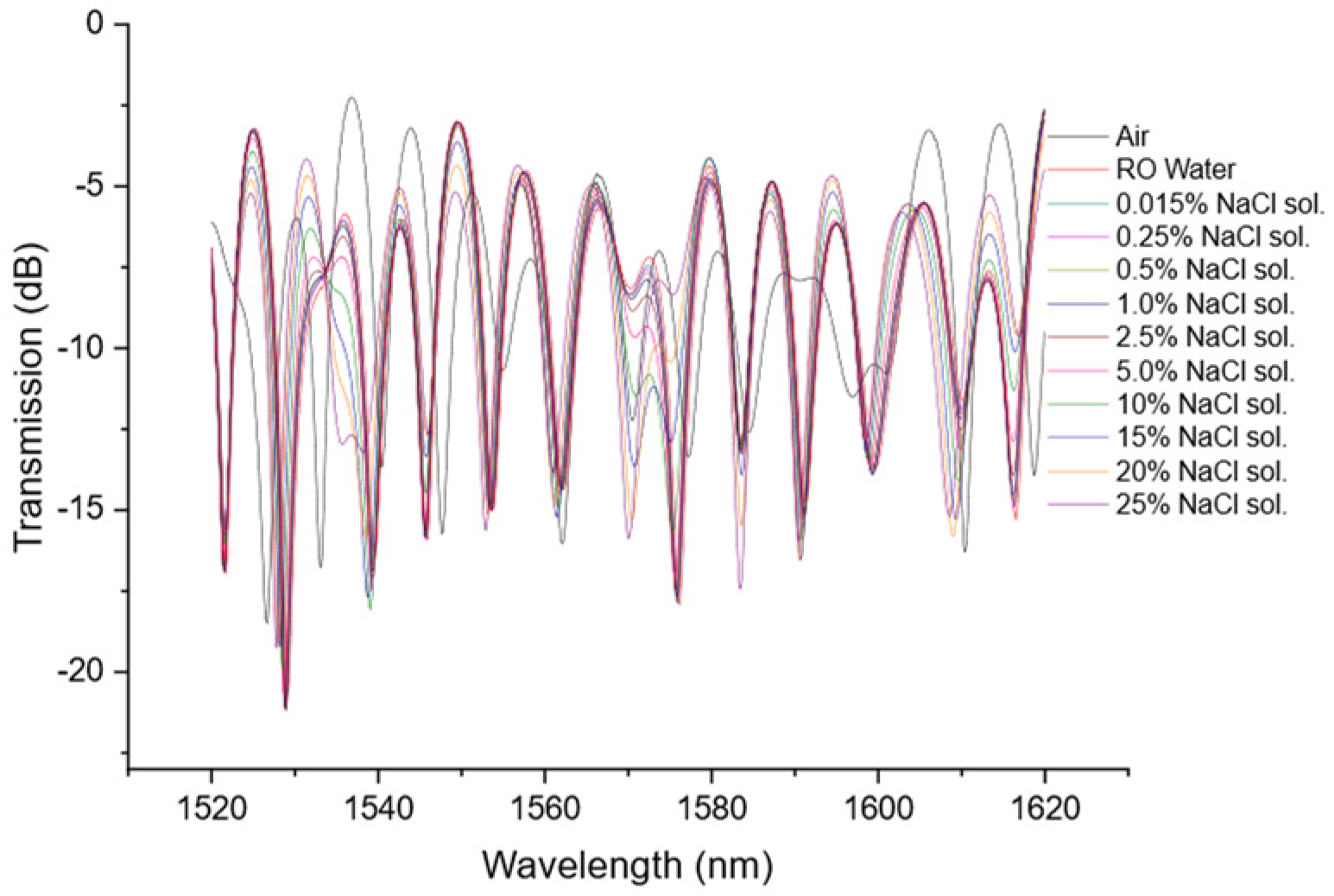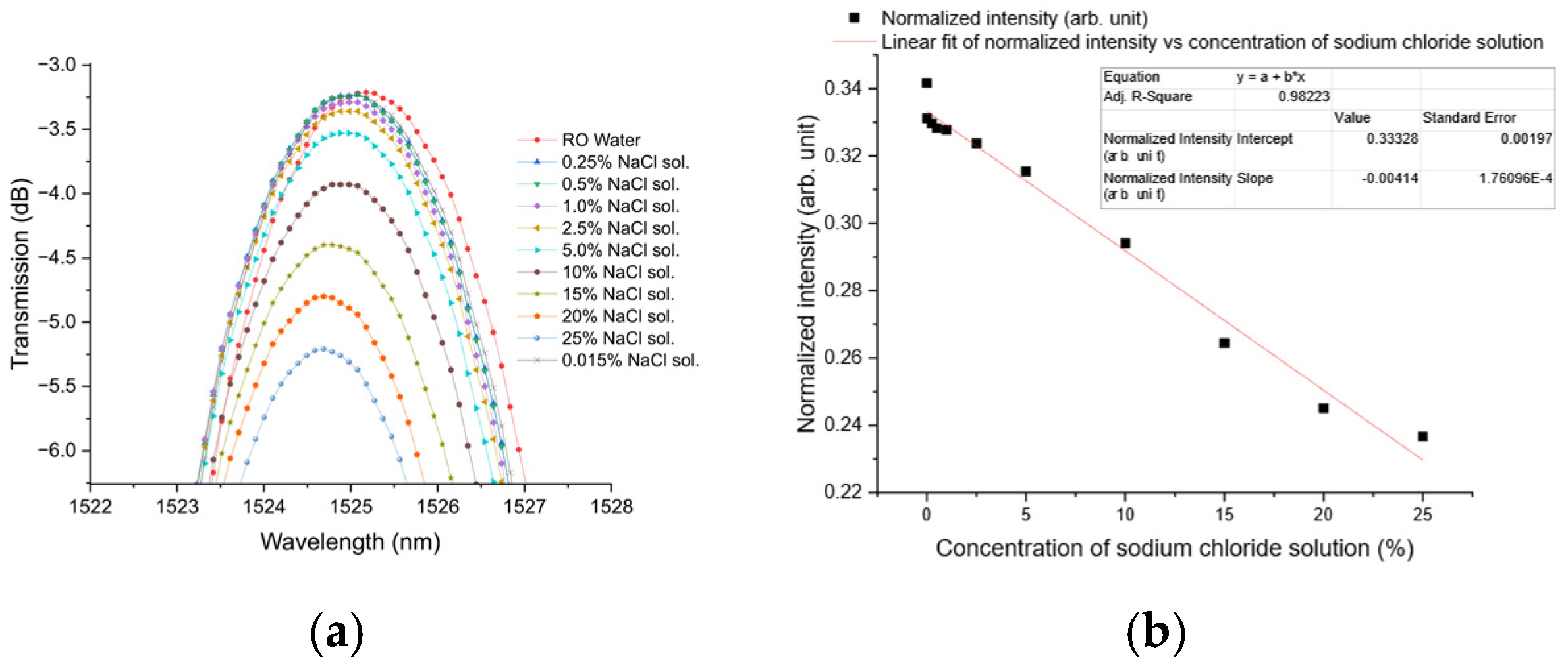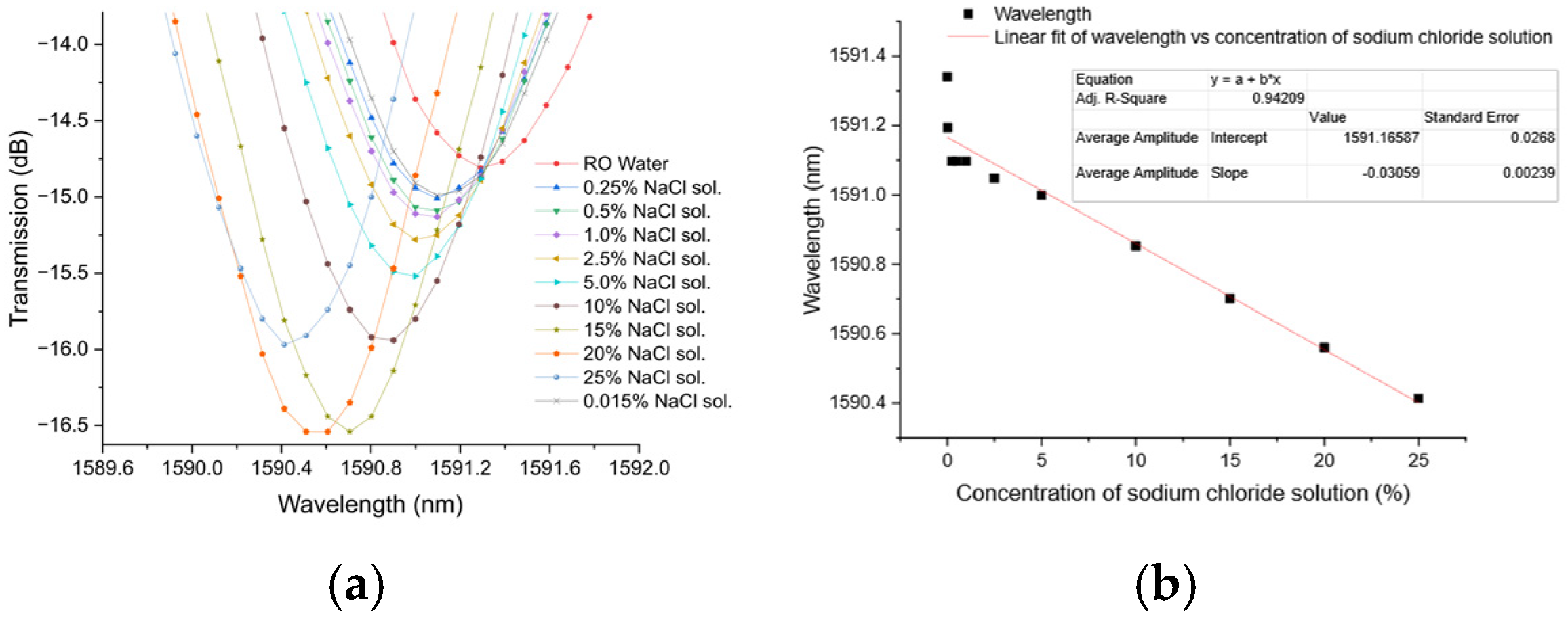Test and Analysis of Lateral-Offset Optical Fiber Mach-Zehnder Interferometer Using Near-Infrared Light Employed as Chloride Ion Concentration Sensor †
Abstract
1. Introduction
2. Lateral-Offset Optical Fiber Sensing of Chloride Ion Concentration Using Mach–Zehnder Interferometer
2.1. Fabrication of Lateral-Offset Optical Fiber Mach–Zehnder Interferometer
2.2. Lateral-Offset Optical Fiber Mach–Zehnder Interferometer for Sensing Chloride Ion Concentration
2.3. Comparative Spectral Analysis
3. Results and Discussion
4. Conclusions
Author Contributions
Funding
Institutional Review Board Statement
Informed Consent Statement
Data Availability Statement
Conflicts of Interest
References
- Tang, J.L.; Wang, J.N. Measurement of chloride-ion concentration with long-period grating technology. Smart Mater. Struct. 2007, 16, 665–672. [Google Scholar] [CrossRef]
- Wang, J.N. A microfluidic long-period fiber grating sensor platform for chloride ion concentration measurement. Sensors 2011, 11, 8550–8568. [Google Scholar] [CrossRef] [PubMed]
- Wang, J.N.; Tang, J.L. Photonic crystal fiber Mach-Zehnder interferometer for refractive index sensing. Sensors 2012, 12, 2983–2995. [Google Scholar] [CrossRef] [PubMed]
- Villatoro, J.; Minkovich, V.P.; Pruneri, V.; Badenes, G. Simple all-microstructured-optical-fiber interferometer built via fusion splicing. Opt. Express 2007, 15, 1491–1496. [Google Scholar] [CrossRef] [PubMed]
- Bianchetti, M.; Avila-Garcia, M.S.; Mata-Chavez, R.I.; Sierra-Hernandez, J.M.; Zendejas-Andrade, L.A.; Jauregui-Vazquez, D.; Estudillo-Ayala, J.M.; Rojas-Laguna, R. Symmetric and Asymmetric Core-Offset Mach-Zehnder Interferometer Torsion Sensors. IEEE Photonics Technol. Lett. 2017, 29, 1521–1524. [Google Scholar] [CrossRef]





Disclaimer/Publisher’s Note: The statements, opinions and data contained in all publications are solely those of the individual author(s) and contributor(s) and not of MDPI and/or the editor(s). MDPI and/or the editor(s) disclaim responsibility for any injury to people or property resulting from any ideas, methods, instructions or products referred to in the content. |
© 2025 by the authors. Licensee MDPI, Basel, Switzerland. This article is an open access article distributed under the terms and conditions of the Creative Commons Attribution (CC BY) license (https://creativecommons.org/licenses/by/4.0/).
Share and Cite
Wang, J.-N.; Wu, P.-H. Test and Analysis of Lateral-Offset Optical Fiber Mach-Zehnder Interferometer Using Near-Infrared Light Employed as Chloride Ion Concentration Sensor. Proceedings 2025, 129, 73. https://doi.org/10.3390/proceedings2025129073
Wang J-N, Wu P-H. Test and Analysis of Lateral-Offset Optical Fiber Mach-Zehnder Interferometer Using Near-Infrared Light Employed as Chloride Ion Concentration Sensor. Proceedings. 2025; 129(1):73. https://doi.org/10.3390/proceedings2025129073
Chicago/Turabian StyleWang, Jian-Neng, and Pei-Hsuan Wu. 2025. "Test and Analysis of Lateral-Offset Optical Fiber Mach-Zehnder Interferometer Using Near-Infrared Light Employed as Chloride Ion Concentration Sensor" Proceedings 129, no. 1: 73. https://doi.org/10.3390/proceedings2025129073
APA StyleWang, J.-N., & Wu, P.-H. (2025). Test and Analysis of Lateral-Offset Optical Fiber Mach-Zehnder Interferometer Using Near-Infrared Light Employed as Chloride Ion Concentration Sensor. Proceedings, 129(1), 73. https://doi.org/10.3390/proceedings2025129073




